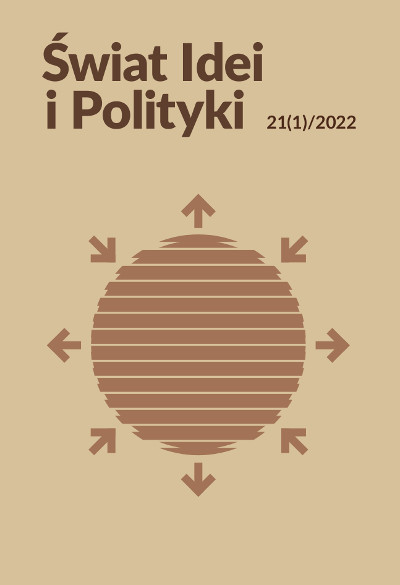Kształtowanie się idei praw zwierząt oraz polityki ochrony zwierząt w Europie i Polsce – od homocentryzmu do postawy antyantropocentrycznej
DOI:
https://doi.org/10.34767/SIIP.2022.01.02Słowa kluczowe:
zwierzęta, prawa zwierząt, dobrostan, bioetyka, wiwisekcja, ekofilozofiaAbstrakt
W niniejszym artykule zaprezentowane zostały peregrynacje w głąb epok, do miejsc, gdzie kształtowały się idee praw zwierząt, obecne w świadomości współczesnych Europejczyków. Pomimo że postrzeganie stworzeń innych niż ludzie jest wyraźnym problemem współczesnego społeczeństwa w Europie, ugruntowany przez wieki antropocentryzm utrudnia przyjęcie podmiotowości zwierząt na płaszczyźnie politycznej, prawnej, a nawet obyczajowej. Artykuł stanowi analizę kształtowania się rzeczywistości społecznej i politycznej, w kontekście percepcji zwierząt, będącej odbiciem charakterystycznych dla poszczególnych okresów w dziejach postaw i idei. Celem poniższej refleksji jest wskazanie przyczyn utrudniających, a często i uniemożliwiających wprowadzenie zmian w polityce ochrony zwierząt zarówno w Europie, jak i w Polsce. Z racji tego, że artykuł ma charakter eseistyczno-teoretyczny, zrezygnowano z formułowania hipotez badawczych.
Bibliografia
Arystoteles (IV w. p.n.e. / 2001). Polityka. Przeł. L. Piotrowicz. Warszawa: Wydawnictwo Naukowe PWN.
Biblia Tysiąclecia (2008). Poznań–Warszawa: Wydawnictwo Pallottinum.
Błońska, B. & Gogłoza, W. & Klaus, W. & Woźniakowska-Fajst, D. (red.) (2017). Sprawiedliwość dla zwierząt. Warszawa: Wydawnictwo Instytutu Nauk Prawnych Polskiej Akademii Nauk, Stowarzyszenie Otwarte Klatki.
Baratay, É. (2019). Zwierzęcy punkt widzenia. Inna wersja historii. Gdańsk: Wydawnictwo w Podwórku.
DeGrazia, D. (2014). Prawa zwierząt. Bardzo krótkie wprowadzenie. Kraków: Wydawnictwo NOMOS.
Fagan, B. (2018). Zażyła więź. Jak zwierzęta kształtowały historię ludzkości. Katowice: Wydawnictwo SONIA DRAGA SP. z o.o.
Ganowicz-Bączyk, A. (2009). Spór o etykę środowiskową. Kraków: Wydawnictwo WAM.
Gogłoza, D. (2017). Najważniejsze trendy we współczesnym ruchu działającym na rzecz zwierząt. W: B. Błońska & W. Gogłoza & W. Klaus & D. Woźniakowska-Fajst (red.), Sprawiedliwość dla zwierząt. Warszawa: Wydawnictwo Instytutu Nauk Prawnych Polskiej Akademii Nauk, Stowarzyszenie Otwarte Klatki.
Gogłoza, W. (2017). Nieme bestie – podmiotowość prawna zwierząt w krzywym zwierciadle średniowiecznego i wczesnonowożytnego procesu sądowego. W: B. Błońska & W. Gogłoza & W. Klaus & D. Woźniakowska-Fajst (red.), Sprawiedliwość dla zwierząt.Warszawa: Wydawnictwo Instytutu Nauk Prawnych Polskiej Akademii Nauk, Stowarzyszenie Otwarte Klatki.
Jaeschke, T. & Stanisławska, I. & Sumińska, D. (2019). Nieboskie stworzenia. Jak Kościół wyklucza. Warszawa: Wydawnictwo Krytyki Politycznej.
Jan Paweł II (1987). Sollicitudo rei socialis.
Probucka, D. (2013). Filozoficzne podstawy idei praw zwierząt. Kraków: WydawnictwoUniversitas.
Stuart, T. (2011). Bezkrwawa rewolucja. Historia wegetarianizmu od 1600 roku do współczesności. Warszawa: Wydawnictwo W.A.B.
Ustawa z dnia 21 sierpnia 1997 r. o ochronie zwierząt. Dz. U. 1997 nr 111 poz. 724.


